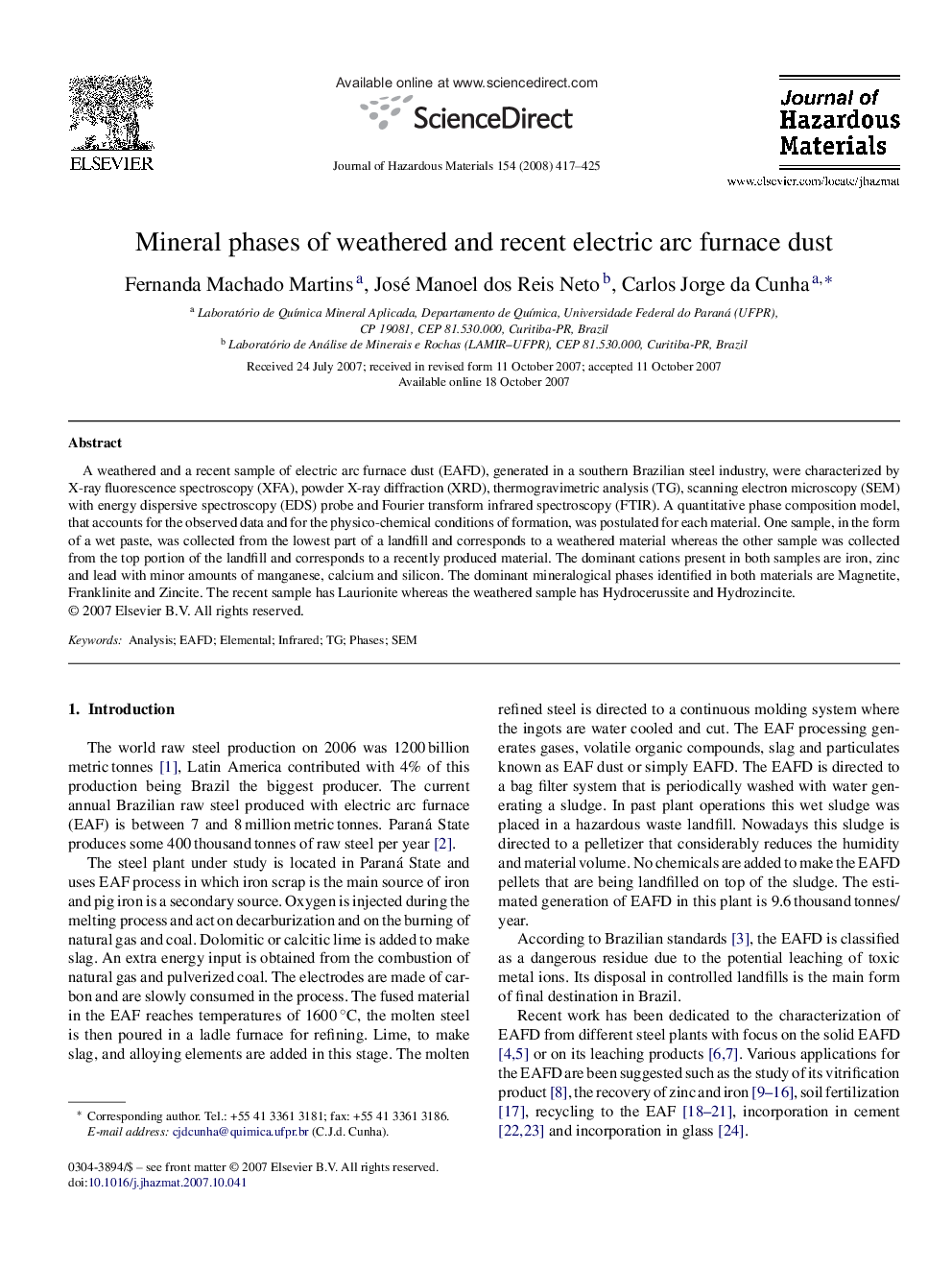| Article ID | Journal | Published Year | Pages | File Type |
|---|---|---|---|---|
| 583613 | Journal of Hazardous Materials | 2008 | 9 Pages |
Abstract
A weathered and a recent sample of electric arc furnace dust (EAFD), generated in a southern Brazilian steel industry, were characterized by X-ray fluorescence spectroscopy (XFA), powder X-ray diffraction (XRD), thermogravimetric analysis (TG), scanning electron microscopy (SEM) with energy dispersive spectroscopy (EDS) probe and Fourier transform infrared spectroscopy (FTIR). A quantitative phase composition model, that accounts for the observed data and for the physico-chemical conditions of formation, was postulated for each material. One sample, in the form of a wet paste, was collected from the lowest part of a landfill and corresponds to a weathered material whereas the other sample was collected from the top portion of the landfill and corresponds to a recently produced material. The dominant cations present in both samples are iron, zinc and lead with minor amounts of manganese, calcium and silicon. The dominant mineralogical phases identified in both materials are Magnetite, Franklinite and Zincite. The recent sample has Laurionite whereas the weathered sample has Hydrocerussite and Hydrozincite.
Related Topics
Physical Sciences and Engineering
Chemical Engineering
Chemical Health and Safety
Authors
Fernanda Machado Martins, José Manoel dos Reis Neto, Carlos Jorge da Cunha,
